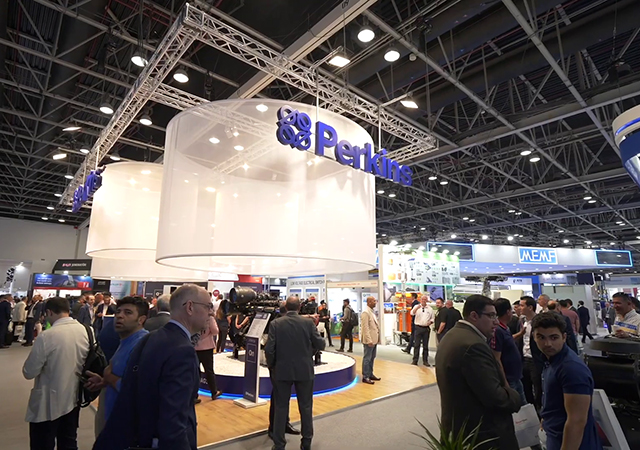
 Image by Skilledman Bigstock
Image by Skilledman Bigstock
Kuwait, an oil-rich country in the Middle East, has been making significant efforts to diversify its economy and decrease its reliance on oil. One sector that has been specifically targeted for development is the industrial sector.
In 2023, Kuwait approved a 12-year industrial strategy that extends until 2035, with a primary emphasis on initiating new projects and stimulating growth within the industrial sector.
The strategy's initial stage consists of 48 projects, and its overall objective is to enforce strict adherence to standards while promoting discipline, transparency, and the expeditious completion of projects, as reported by Al-Qabas.
KUWAIT VISION 2035 AND THE NATIONAL INDUSTRIAL STRATEGY
The industrial vision of Kuwait aligns with the country's broader economic vision, known as "Kuwait Vision 2035." This vision aims to develop various economic sectors, with the industrial sector being one of the most prominent.
The primary objective is to achieve a diversified and sustainable economy, reducing the country's dependence on oil.
The National Industrial Strategy 2035 aims to position Kuwait as a global center for innovative and sustainable competitive industries.
STRATEGIC GOALS AND OBJECTIVES
The strategic goals of the National Industrial Strategy 2035 include increasing the industrial sector's contribution to the country's GDP by enhancing the added value of national industries and attracting local and foreign investments.
The strategy emphasises the importance of research and development, creativity and innovation, targeted investment opportunities, regional and international promotion of national products, and diversification of Kuwaiti exports.
According to the Public Authority for Industry (PAI), the strategic objectives include:
•Increasing the capital invested in the industrial sector from KWD 5.2 billion to KWD 11 billion ($36.30 billion).
•Increasing the number of specialised jobs for nationals in the sector from 11,000 to 25,000.
•Increasing industrial sector exports from KWD 1.67 billion to about KWD 3 billion.
•Increasing the added value of the manufacturing sector from KWD 1.8 billion to about KWD 2.4 billion.
•Increasing the value of spending on research and development from KWD 14.5 million to KWD 55 million ($181.49 million).
INDUSTRIAL SECTOR FINANCING AND RESILIENCE
The Kuwaiti industrial sector witnessed a significant increase in financing from local banks in January 2023, reaching KWD 148.9 million, reflecting a 38.3 per cent annual increase. This financing supports industrial development and growth. The accumulated balance of industry financing also grew, reaching KWD 2.686 billion in January 2024, according to Arab Times.
However, there was a 31 per cent decline in total monthly financing in December 2023, largely attributed to the Covid-19 pandemic and global supply chain disruptions.
Despite this setback, the Kuwaiti government has implemented initiatives to support the sector's growth.
These initiatives include addressing bureaucratic inefficiencies, promoting domestic manufacturing, and enhancing infrastructure, demonstrating the sector's resilience and potential to drive economic growth and prosperity.
ESTABLISHMENT OF NUWAISEEB FREE ZONE
The Kuwait Direct Investment Promotion Authority (KDIPA) has finalised plans for the establishment of the Nuwaiseeb Free Zone, located in the southern region of Kuwait.
This new free zone, designed with advanced economic specifications, aims to become a leading investment hub in the country.
It seeks to attract both local and foreign companies across various sectors, offering a range of investor services and facilities, as reported by Kuwait Times.
The Nuwaiseeb Free Zone intends to accommodate and support 500 local and foreign companies, providing them with diverse economic activities.
It will feature 50 logistics warehouses, storage facilities, and land plots, offering ample space for businesses to operate.
Additionally, the zone will house 50 factories specialising in light and manufacturing industries, contributing to the growth of the industrial sector.
To cater to the needs of investors and visitors, the free zone will include three upscale hotels, two sub-lease investment complexes, and four restaurant complexes.
These facilities will provide accommodations, office spaces, and dining options for individuals and companies operating within the zone.
Furthermore, two medical centers will be established to cater to the healthcare needs of workers and visitors.
Recognising the importance of banking services, more than five locations within the free zone have been designated as headquarters for multiple commercial banks. This ensures easy access to financial services and support for businesses and investors.
The establishment of the Nuwaiseeb Free Zone is a significant milestone for Kuwait, as it is the first new free zone to be established in two decades.
The project aims to learn from past experiences and avoid the challenges faced by the Shuwaikh Free Zone. Meticulous planning and execution are emphasised to ensure the success of the Nuwaiseeb Free Zone.
COMPREHENSIVE FIVE-YEAR WORK PLAN AND DIGITAL TRANSFORMATION
In addition to the establishment of the Nuwaiseeb Free Zone, Kuwait has set a comprehensive five-year work plan to accelerate economic reforms and drive its digital transformation, as reported by Arab Times Kuwait.
The plan, spanning from 2024 to 2028, focuses on diversifying the country's income sources and promoting growth in the non-oil sector.
Infrastructure development plays a crucial role in this plan, with the private sector expected to play a pivotal role in driving investments and initiatives.
By leveraging the potential of the private sector and promoting innovation and digitalisation, Kuwait aims to create a more diversified and resilient economy.
All in all, by implementing these strategies and initiatives, Kuwait aims to achieve its economic vision, reduce dependence on oil, and create a diversified and resilient economy that fosters innovation and sustainable growth.








